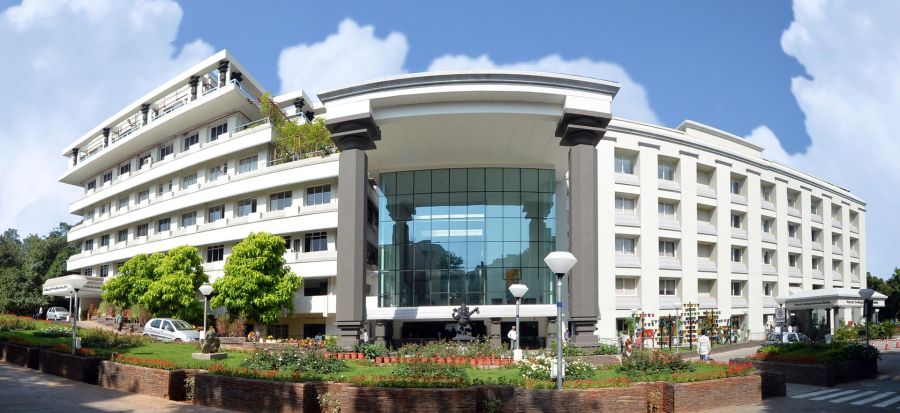News from our member L V Prasad Eye Institute
Eye Health for All
April 7 marks the founding of the World Health Organization (WHO) in 1948. It is celebrated each year as ‘World Health Day’ to draw attention to WHO’s goal of achieving ‘health for all’. April at LVPEI also saw us reach a celebration-worthy milestone: we are now present in 300 locations across the southern states of India. Our unrivalled rural eye health network is central to this accomplishment — an integrated, comprehensive eye health system that proudly stands as the Srst and largest of its kind in the world. This network of centres is key to LVPEI’s goal of ‘eye health for all’: ensuring appropriate eye care that is affordable and accessed by communities at their doorstep.
Health is a fundamental right of every citizen. Universal Health Coverage (UHC) is a vision in which everyone enjoys a robust and efScient health system that covers the entire continuum of essential health services, from health promotion to prevention, early detection, treatment, rehabilitation, and palliative care across the life course.
Unfortunately, there are large gaps in accessing this fundamental human right – at least half the global population lacks essential health services. As per the most recent estimates, 3.1 billion people do not have health coverage and more than 75% of them reside in low- and mid-income countries of South Asia, Southeast Asia, East Asia, and Sub-Saharan Africa. There are multiple factors responsible for this state of affairs. One of them is a weak and non-integrated primary health care (PHC) system.
It is a well-known fact that to attain the goal of universal health coverage, strong primary health care is vital and cost-effective. Unfortunately, evidence indicates that primary health care systems are weak and not prioritised in a majority of LMICs. LVPEI is committed to developing a robust and high-quality primary eye care network for the states of Telangana, Andhra Pradesh, Karnataka, and Odisha – the four states where we are present so as to ensure that the eye care needs of a 150 million population are met. This journey started with a series of large public eye health studies conducted by our group which gave us a lot of insight into the eye health characteristics of these communities. Based on this evidence, we developed LVPEI’s pyramidal model of integrated, comprehensive eye care delivery. Today, the model is adopted by many partners both within and outside India.
Further, at the completion of 25 years of our services, our founding Chair Dr Gullapalli N Rao announced that strengthening comprehensive, integrated primary care will be a strategic goal for the next phase of our journey “Next 25”. In this context, achieving the milestone of being present in 300 locations carries special importance for us. All of these primary eye care centres are led by Vision Technicians who are trained and equipped to care for the biggest cause of needless vision impairment i.e. uncorrected refractive error. In addition, through seamless integration with secondary and tertiary eye care centres, they are able to guide and facilitate care for cataract and other eye diseases as well.
It is now well accepted that in the face of overburdened health systems and resource constraints, technology can play an important role in delivering UHC. While humans can’t be replaced in health care, I do believe that technology can enable bridging the gaps by rapidly expanding the reach of health care, as well as supporting frontline health workers to deliver high-quality health care to all who need it. We have witnessed how digital technologies played a central role in the pandemic response across countries and minimized the pandemic’s social, economic, and health impacts.
I am convinced about the value of digital technology for expanding the reach and quality of healthcare; LVPEI will be investing in technologies for this purpose. We have already started several initiatives, and more are in the pipeline. Very early during the pandemic lockdown, our group adopted telehealth to reach out to patients.
It all started with providing consultation through audio calls. Soon, our colleagues at the Centre for Technology Innovation developed a telehealth application to make it more robust. Today, telehealth has become an integral part of our patientnconsultation system. It is enabling thousands of patients to get eye health advice from their homes, saving them cost and the inconvenience of travelling long distances. At the same time, the technology is reducing our carbon footprint.
A couple of months ago, we launched a mobile application called “SightConnect – your eyecare in your hands” in partnership with the Infosys foundation. Users can assess the status of their vision and eye health, and they are guided to connect to the nearest healthcare facility. I am excited about this partnership, and the app. We are conSdent that this will be an excellent tool to empower people with eye health access–especially those in rural areas.
I would like to end this note by thanking all our partners, supporters, and well-wishers for their faith and trust in us. Together, we are on a journey to take high-quality eye care to remote and rural areas. Your support will enable LVPEI in fulSlling our mission of eliminating needless vision impairment, so that all may “See”.
– Prashant Garg
